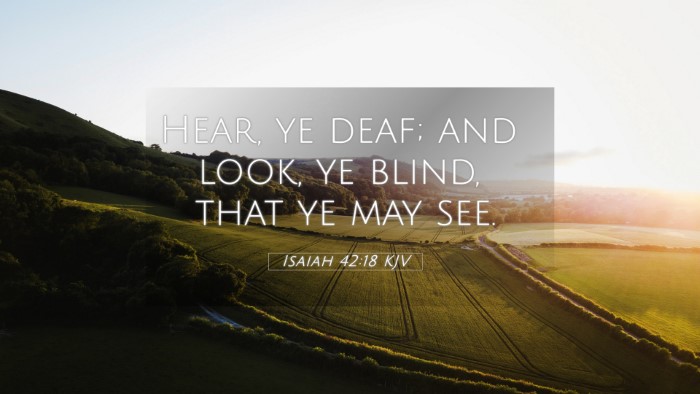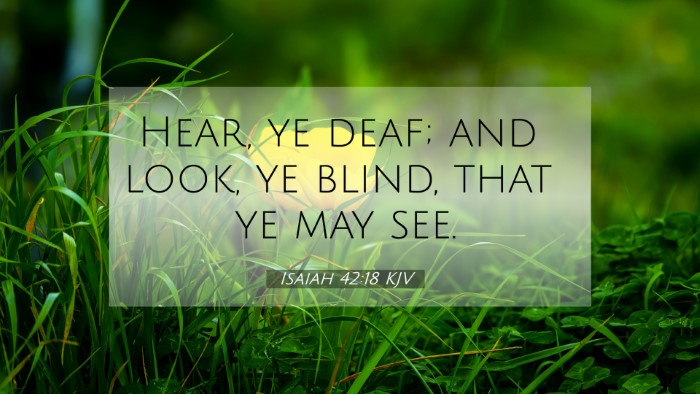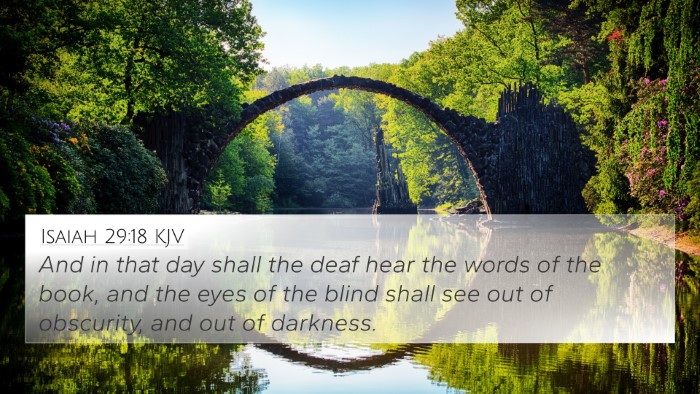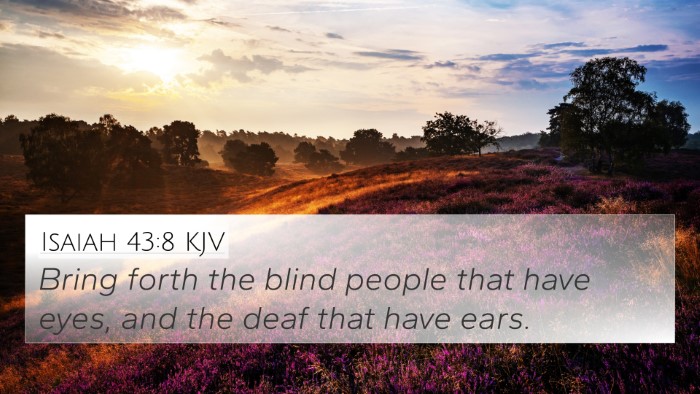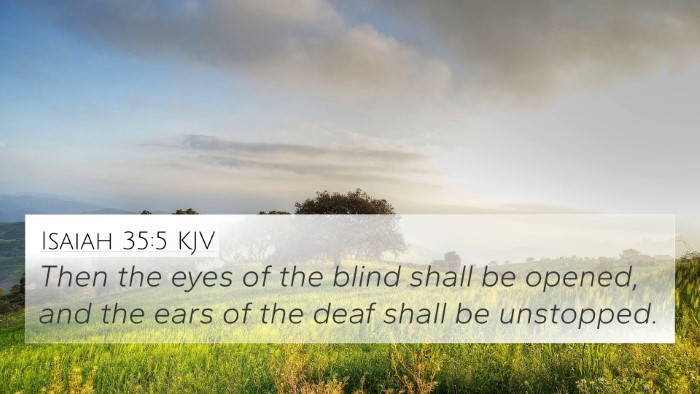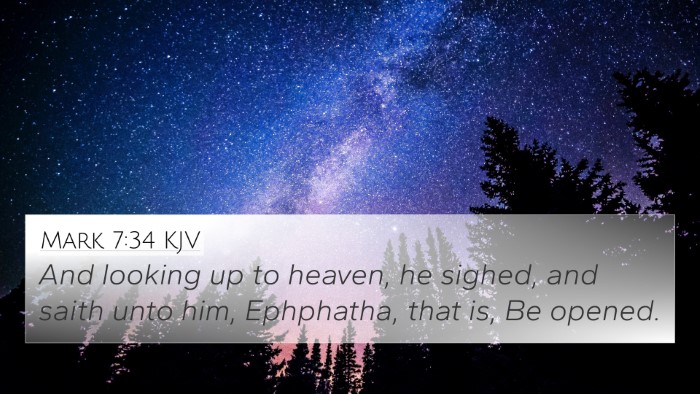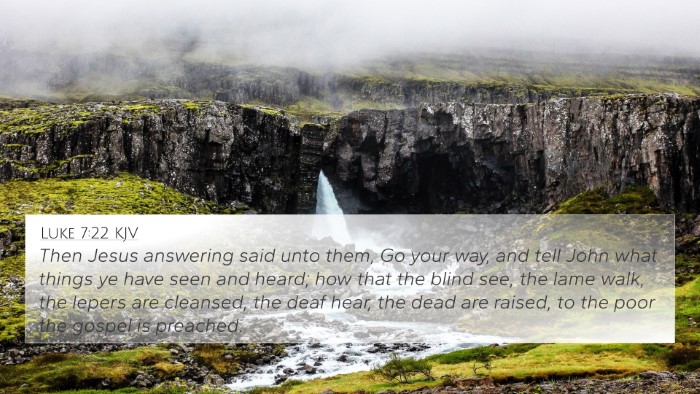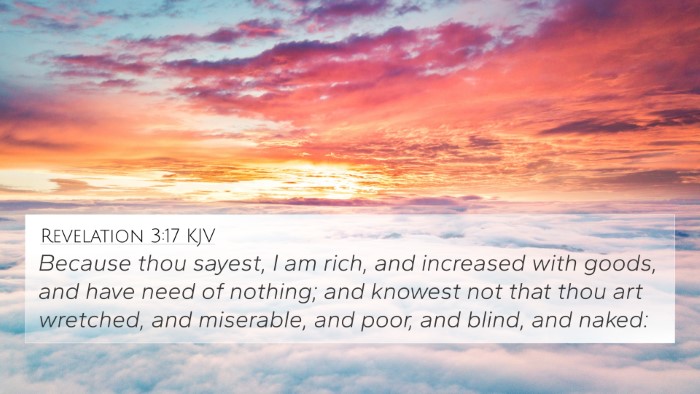Understanding Isaiah 42:18
Isaiah 42:18 states: "Hear, ye deaf; and look, ye blind, that ye may see." This verse is a profound invitation to heed spiritual truths, addressing both physical and spiritual blindness and deafness. Below, we explore the combined insights from various public domain commentaries, including those by Matthew Henry, Albert Barnes, and Adam Clarke, to unveil the deeper meanings of this scripture.
Contextual Overview
This verse appears in a chapter that highlights the servant of the Lord, who is a figure prophesying hope and restoration. The gentle but assertive call to the "deaf" and "blind" encapsulates the essence of God's message through His servant.
Commentary Insights
-
Matthew Henry:
Henry emphasizes that the deaf and blind refer not only to physical ailments but also symbolize the unresponsive hearts of individuals who fail to perceive God's truth. He indicates that this verse is a divine summons to awaken and see the realities of God's will and His promises.
-
Albert Barnes:
Barnes notes that the call to those who cannot hear or see demonstrates God's desire to reach all people, despite their condition. He reflects on how spiritual awakening is vital for understanding God's pathway and blessings.
-
Adam Clarke:
Clarke focuses on the implications for the Israelites. He implies that the message was intended not just for the hearing and seeing, but also as a rebuke to those who neglect God’s revelations. He points out that God’s grace is present for all who are willing to accept it.
Key Themes
Within Isaiah 42:18, several key themes emerge:
- Awareness: The need for spiritual awareness in recognizing divine truths.
- Divine Invitation: God’s persistent call to those who are spiritually incapable or indifferent.
- Restoration: A promise of restoration for those who turn to Him.
- Universal Call: An inclusive message that emphasizes God’s concern for all humanity.
Related Bible Cross-References
Isaiah 42:18 connects significantly with various other scriptures, forming a network of biblical understanding:
- John 9:39 - "For judgment I am come into this world, that they which see not might see; and that they which see might be made blind."
- Matthew 13:15 - "For this people's heart is waxed gross, and their ears are dull of hearing, and their eyes they have closed..."
- Revelation 3:17 - "Because thou sayest, I am rich, and increased with goods, and have need of nothing; and knowest not that thou art wretched, and miserable, and poor, and blind, and naked."
- Isaiah 6:10 - "Make the heart of this people fat, and make their ears heavy, and shut their eyes..."
- Luke 4:18 - "The Spirit of the Lord is upon me, because he hath anointed me to preach the gospel to the poor..."
- Acts 26:18 - "...to open their eyes, and to turn them from darkness to light..."
- 2 Corinthians 4:4 - "In whom the god of this world hath blinded the minds of them which believe not..."
Thematic Bible Verse Connections
Connecting verses revolve around themes of understanding, receptivity, and divine calling:
- John 10:27 - "My sheep hear my voice, and I know them, and they follow me."
- Isaiah 61:1 - "The Spirit of the Lord is upon me; because the Lord hath anointed me..."
- Psalm 146:8 - "The Lord openeth the eyes of the blind; the Lord raiseth them that are bowed down: the Lord loveth the righteous."
Inter-Biblical Dialogue
Understanding Isaiah 42:18 also opens avenues for inter-biblical dialogue, fostering a deeper knowledge of God’s consistent message across testaments.
Using Scripture for Cross-Referencing
Utilizing tools for Bible cross-referencing provides invaluable insights into verse connections, which uncover a tapestry of truth throughout scripture. Using a Bible concordance or cross-reference guide can enhance your study of biblical themes.
Conclusion
Isaiah 42:18 serves as a clarion call for all to awaken to divine truth and to perceive God's redemptive work. By exploring this verse through the lenses of various commentaries and engaging in cross-referencing with companion scriptures, one can better grasp the holistic message of hope and restoration encapsulated within the Bible.

